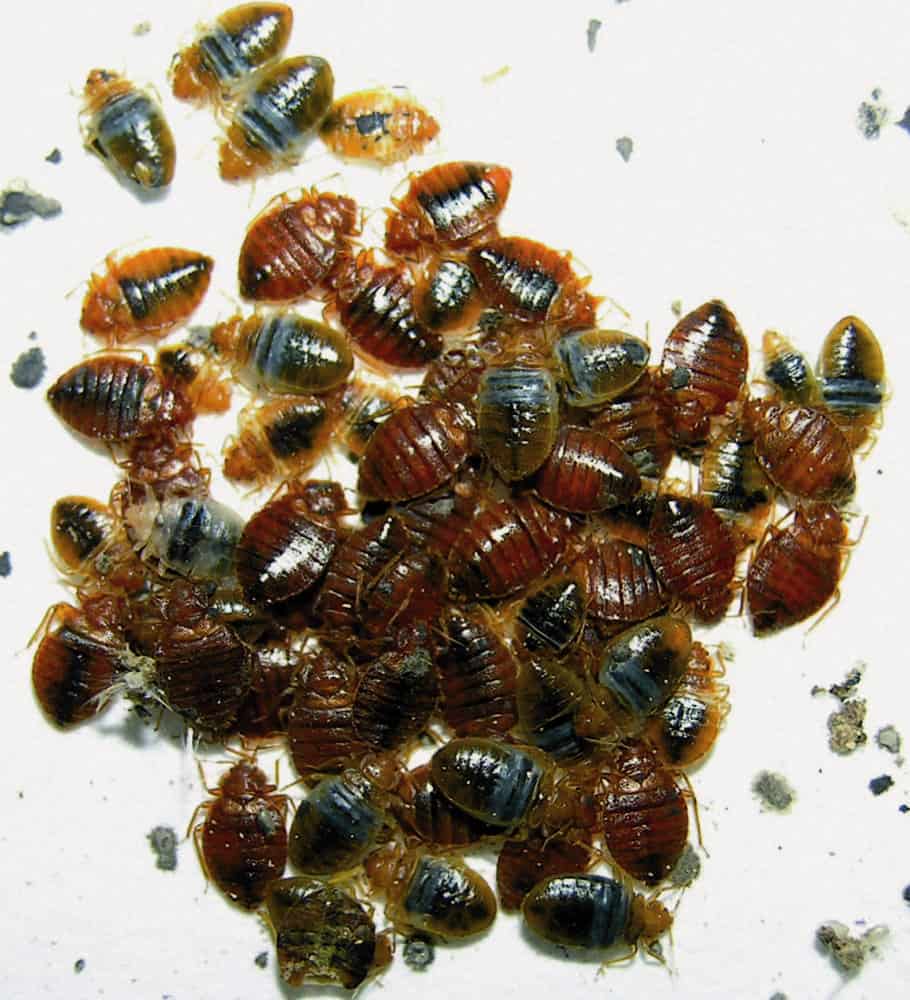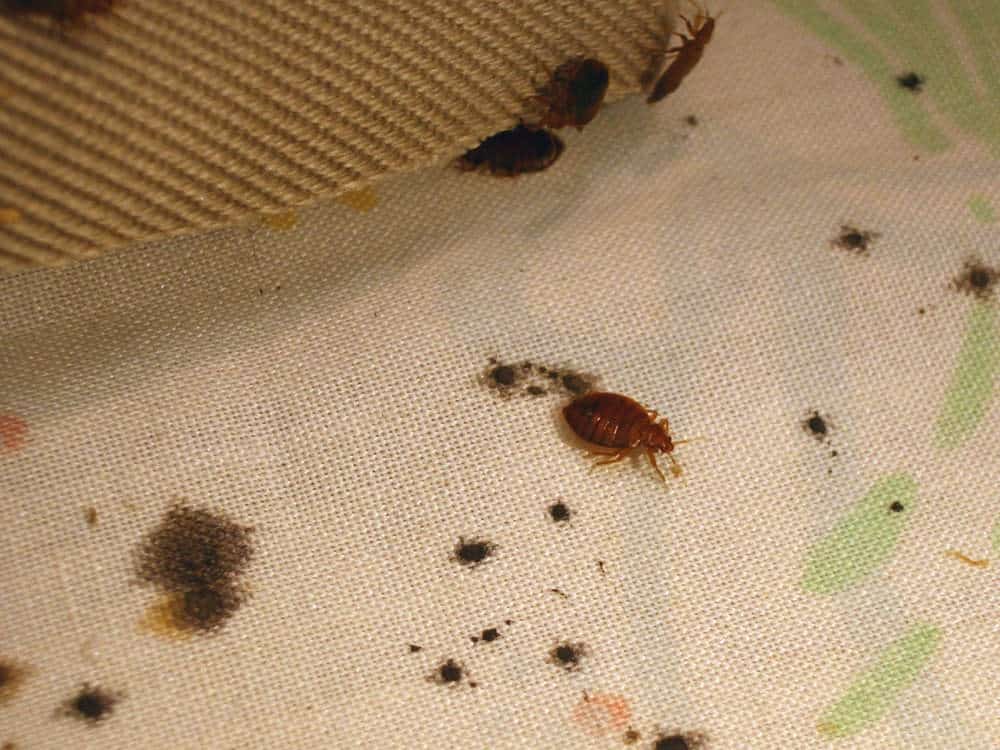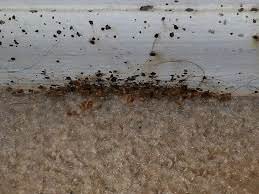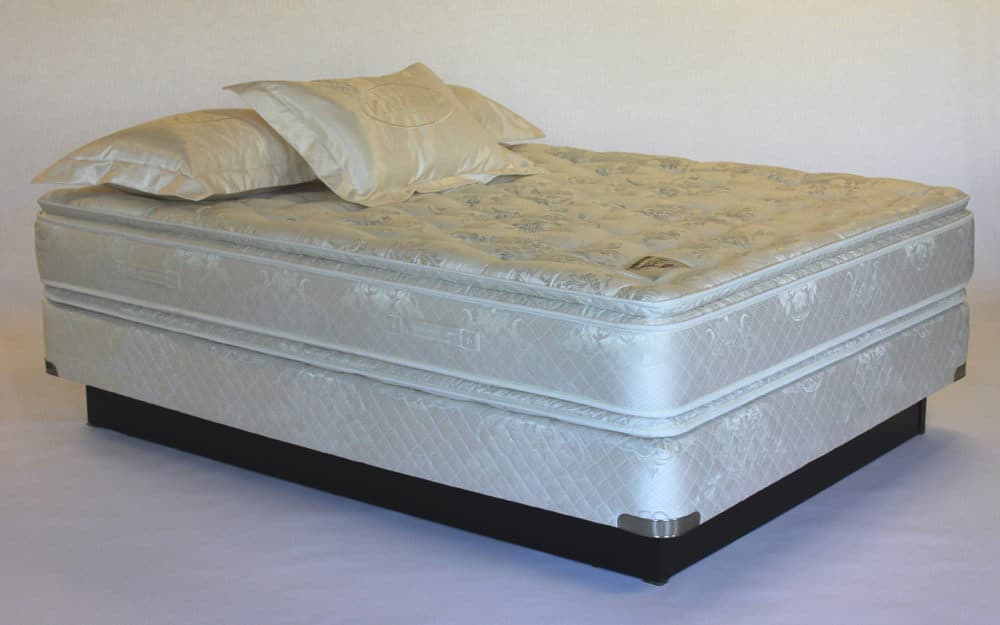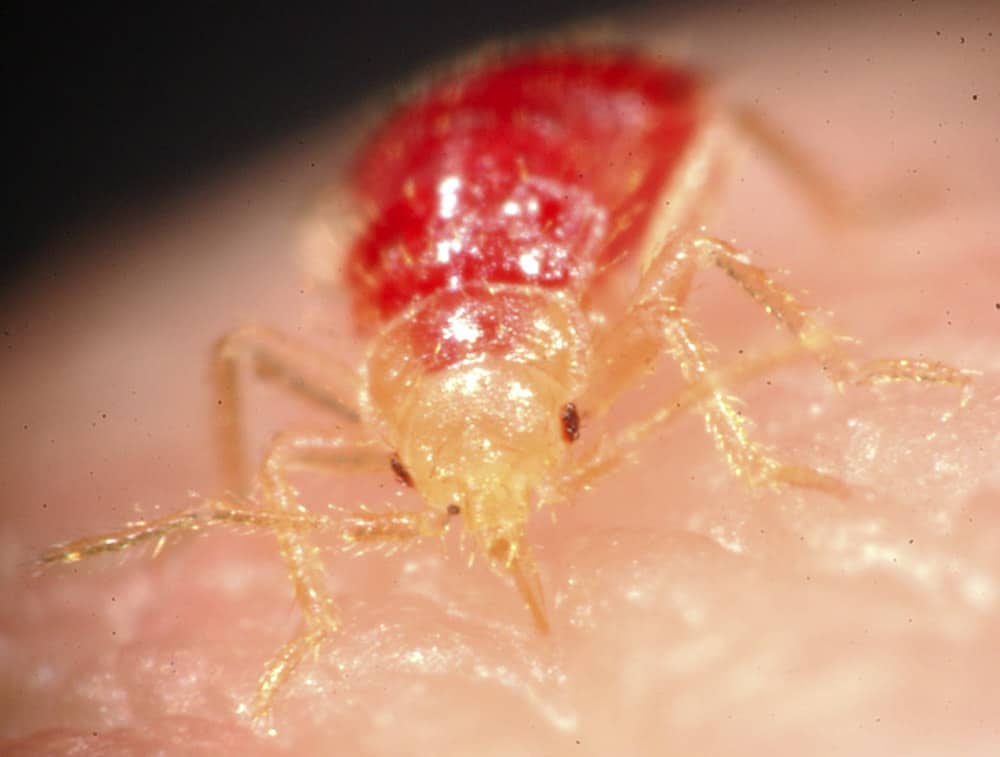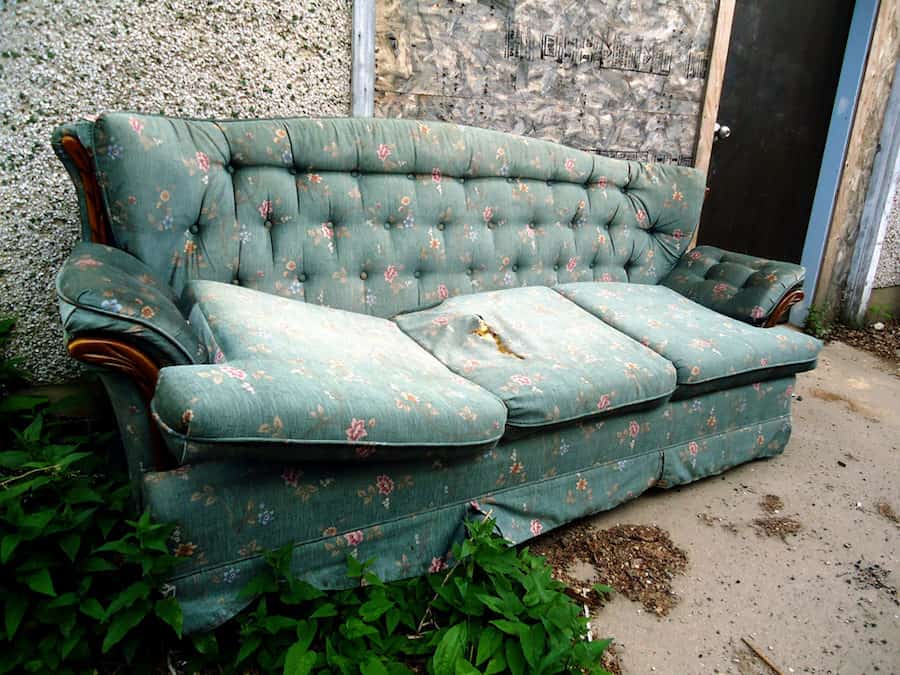How Long Do Bed Bug Eggs Take To Hatch?
Bed bugs are quick breeders. Their numbers can increase rapidly in a number of weeks and their eggs are hardy and resilient. Once they have been laid, it doesn’t take long for the next generation of bed bugs to spring to life.
After mating, female bed bugs will lay white, oval eggs into thoughtfully chosen hiding places. Once carefully placed, these bed bug eggs will take between 6 and 10 days to hatch
What Conditions Do Bed Bug Eggs Need to Hatch?
The length of time it takes for a bed bug egg to hatch depends mainly on temperature. In optimal conditions of 70 degrees Fahrenheit, around 60 percent of bed bug eggs will hatch after six days. However, for more than 90 percent of the eggs to hatch, it can take up to nine days.
This time can increase by several more days if the temperature is not warm enough. When the mercury drops to around 50 degrees Fahrenheit, the eggs will take two weeks or more to hatch.
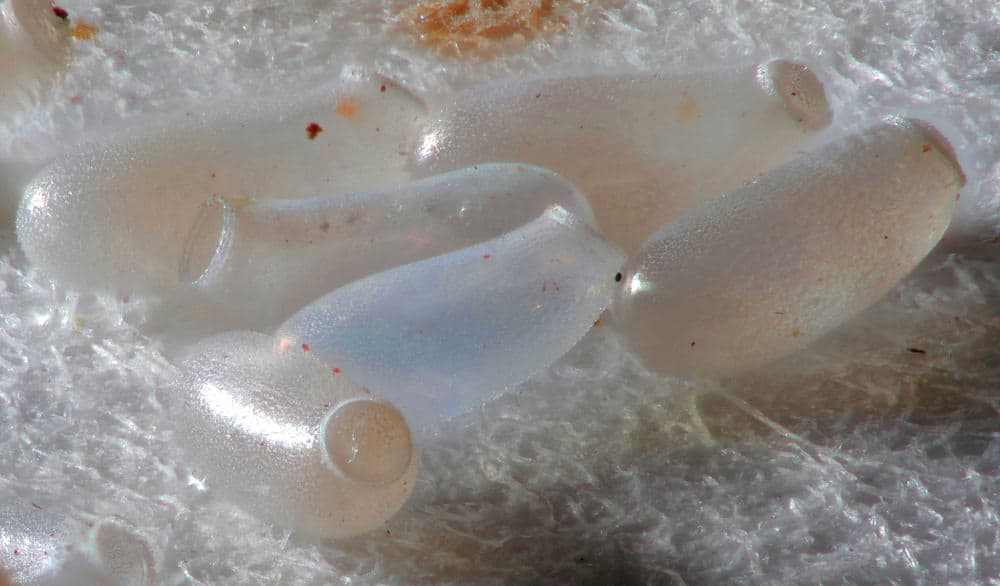
Factors That Prevent Bed Bug Eggs From Hatching
Temperature sensitivity is the main factor that can affect the hatching of bed bug eggs. When exposed to high temperatures, above 118 degrees Fahrenheit, the eggs will not survive. However, this temperature must be maintained for a minimum of 90 minutes.
Using heat treatment is a very effective method to target both adult bed bugs and their eggs. However, this kind of treatment usually requires professional help and may damage furniture or furnishings. Contact a pest control company if you are interested in finding out more about how heat can treat bed bugs and their eggs.
If you would like to try killing bed bugs with heat before consulting professionals, steam can be a great way to reduce bed bug numbers within many areas of your home.
If you’re looking for a powerful and reliable steamer for use against infestations and at a good price, the PureClean XL Rolling Steam Cleaner is a great choice. It’s heavy-duty, made to last, and produces a great covering of extremely hot pressurized steam – exactly what you want in order to kill insects and their eggs on impact.
This steamer can be used on a wide number of surfaces and objects, including mattresses, carpets, curtains, clothing, box springs, bedding and baseboards.
If you wish to take this one step further, you can try using a specially-designed bed bug heating system.
My favorite way to heat household items to a temperature that is sure to kill all bed bugs and eggs without needing to purchase expensive pest control heat treatment is to use a ZappBug Heater, which is specially designed to kill all stages in the bed bug life cycle.
Simply place infested items into the ZappBug heater and it will automatically reach the all-important bed bug killing temperature, so you can be sure the items come out all-clear.
Large and small versions are also available.
With regard to colder temperatures, bed bug eggs have the ability to remain dormant for up to one month. They will remain in a dormant state for that period if the temperature is too cold to hatch.
While you may think that pesticides will kill bed bug eggs and prevent them from hatching, you would be wrong. However, if the correct chemical is used, the bugs will die very soon after hatching. It is important to use the right chemicals to ensure that bed bugs do not survive after they have hatched.
Basics of Bed Bug Eggs
Female bed bugs are only capable of laying eggs after feeding. However, as long as she has a regular intake of food she can, and will, lay plenty of eggs. The number of eggs that a single, female bed bug can lay throughout her lifetime may surprise you.
The average adult bed bug has the ability to live for up to an average of one year. If they have access to a consistent food source and are able to feed daily, female bed bugs can lay eggs every day, too. Following a single meal, a female might lay up to 20 eggs over a 10-day period.
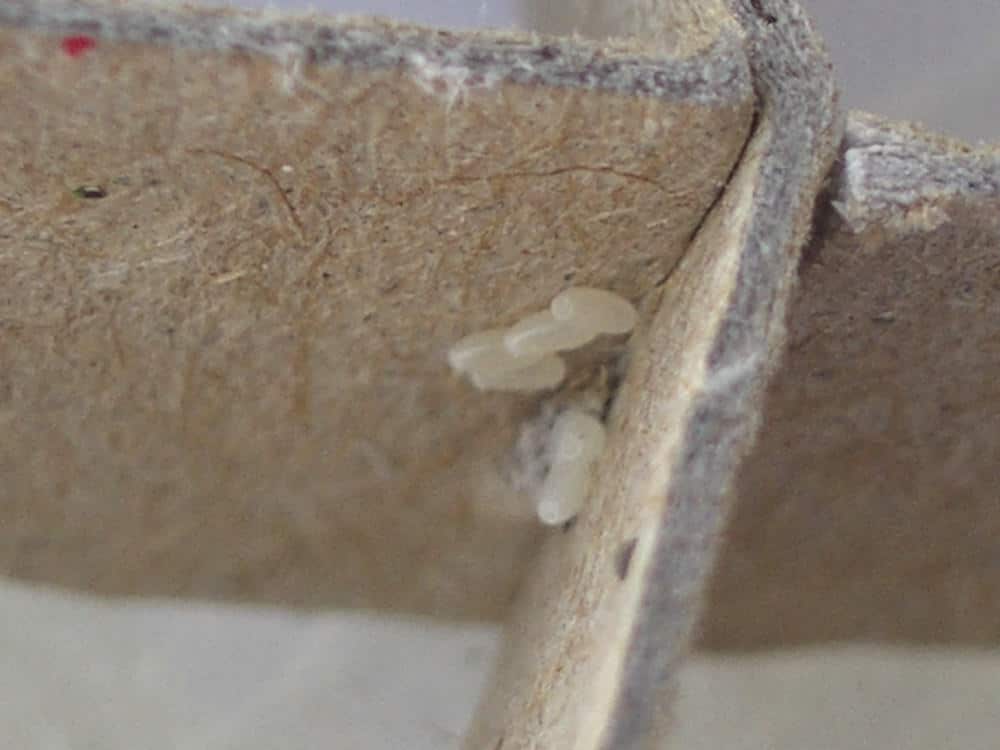
These eggs may be laid in a group, or individually as she is on the move around a room. Within optimal conditions, a bed bug’s eggs have an extremely low mortality rate. Around 97 percent of eggs laid will survive and hatch successfully. Within 5-6 weeks, the nymphs could be adults and begin their own reproductive cycle.
The number of eggs that a female can lay means a rapidly growing bed bug population. The bed bug population in your home can double in size approximately every 16 days. This is quite an alarming rate of growth, especially if you are unaware of the problem.
Bed bug eggs are also very difficult to detect and see with the naked eye. They are typically around the size of a dust speck and white in color. It is unlikely that you will be able to spot them without a magnifying glass.
Due to their light coloration, the eggs are even more difficult to find, especially against a light-colored background. Once the eggs have been laid, they are very sticky and will adhere to almost any surface. This makes them great travelers if they have been deposited on shoes, bags or clothes.
Final Thoughts
The length of time it takes for bed bug eggs to hatch depends mainly on temperature. If they are exposed to optimal temperatures, they can hatch in less than a week. However, they have the ability to remain dormant if temperatures get too low.
Heat can work against them, and will successfully kill bed bug eggs if used correctly. If you’re looking to target bed bug eggs and prevent them from hatching, consulting a professional may be the best choice.

